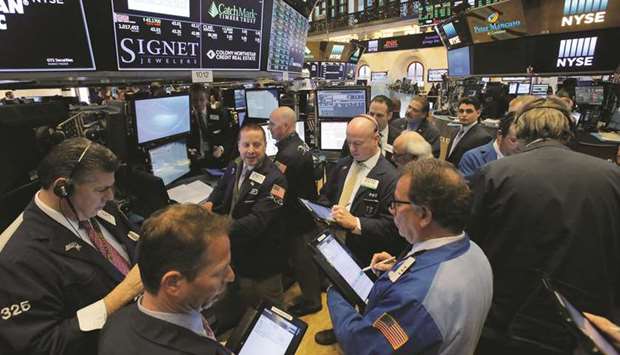The Federal Open Market Committee meeting this week is shaping up as a pivotal one for Wall Street, with stocks primed for a selloff should the Fed fail to take an even more dovish tilt after policymakers raised expectations for a rate cut in recent weeks.
The benchmark S&P 500 has rallied more than 5% this month as softening economic data coupled with comments by Fed officials heightened expectations the Fed will cut rates by the end of the year and, at the very least, telegraph it is leaning toward a later rate cut at its June 18-19 meeting.
Those gains came on the heels of a selloff in May of nearly 7% in the S&P, largely fuelled by investor concerns that trade wars were escalating, slowing the economy and putting it at risk of falling into a recession.
Bets for a rate cut were amplified by comments from Fed chairman Jerome Powell on June 4, who said the central bank will respond “as appropriate” to the risks from a global trade war and other developments, and after a weak May payrolls report on June 7.
Bank of America Merrill Lynch chief economist Michelle Meyer expects the Fed’s “dot plots” projection of interest rates, which represents the anonymous, individual rate projections of Fed policymakers for the next few years, to shift lower as officials start to factor in cuts.
However, “the median dot will signal a Fed on hold,” Meyer said in a note.
“The market has somehow convinced themselves that we are in an easing cycle.
I am not sure how we got so far ahead of ourselves,” said Art Hogan, chief market strategist at National Securities in New York.
“So now you’ve got Powell is kind of painted into a corner that he is really going to have to navigate carefully because you have market expectations that he said he would do whatever is appropriate.”
In a recent note to clients, Goldman Sachs economist Jan Hatzius said one of the themes from recent Fed commentary is that there is a wide range of views from central bank officials, although most “indicated trade policy increased downside risks by increasing uncertainty” and the result of ongoing trade negotiations was highly uncertain.
Many investors had been looking toward the Group of 20 summit later this month for more definitive signs of the direction of trade talks between the United States and China, giving the Fed a clearer picture on whether to take action on rates at the July meeting.
According to CME’s FedWatch tool, money market traders are pricing in an 88.4% chance of a rate cut of at least a quarter of a percentage point in July. Any clarity from the G20 may be hard to come by, however. US President Donald Trump said on Friday “it doesn’t matter” if Chinese leader Xi Jinping attends the Group of 20 summit later this month, predicting a trade deal with Beijing would occur at some point anyway.
“They’ve put themselves in a position where they have optionality in both directions so they can respond,” said Ward McCarthy, chief financial economist at Jefferies in New York said of the Fed.
Economic data this week was a mixed bag, with retail sales topping expectations and halting a tide of weak indicators, including the payrolls report and readings on inflation in the form of May consumer and producer prices with implications for core personal consumption expenditures, the Fed’s favourite inflation measure.
“There were some important prints that confirmed some of the Fed’s fears — we didn’t get PCE but in PPI and CPI, you are not seeing inflation pressure bleeding through,” said Rob Haworth, senior investment strategist at US Bank Wealth Management in Seattle.
Still, a cut at the June meeting has not been ruled out either, with the probability of a quarter point cut put at 24.2%, according to FedWatch. Asset manager Vanguard believes the Fed could implement an “insurance cut” as early as next week, according to the firm’s global chief economist Joe Davis.

Traders work at the New York Stock Exchange (file). The Federal Open Market Committee meeting this week is shaping up as a pivotal one for Wall Street, with stocks primed for a selloff should the Fed fail to take an even more dovish tilt after policymakers raised expectations for a rate cut in recent weeks.


